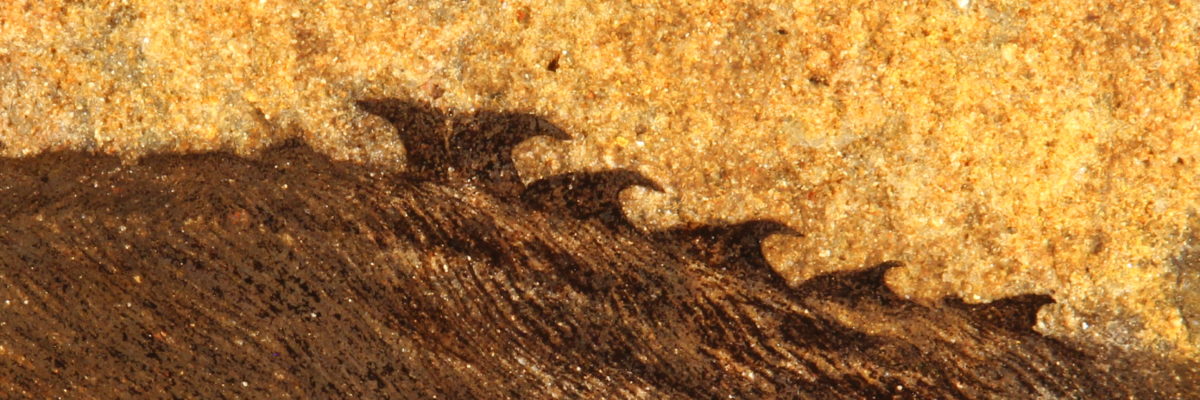Anaspids are fishes known from Silurian and Devonian deposits of the Northern Hemisphere. They are known from many localities, but most species are known from isolated scales. Only a handful of anaspids are known from articulated material. The first intact anaspids to be described are Lasanius and Birkenia from the Fish Bed Formation, which are shown below. This group of fishes is characterised by the presence of post-cephalic rods and a row of dorsal spines.
Lasanius problematicus Traquair, 1898

Lasanius is a unique type of anaspid in that it is the only species without a body covered in scales. Its specific name “problematicus” is due to the unusual post-cephalic rods, the function of which was long unknown. This structure is now regarded as supportive elements for a buccal pump mechanism. Due to the lack of scales, Lasanius can exhibit remains of soft tissues, including components of the internal anatomy. Its skeleton, however, is completely unknown. The size of specimens ranges from less than 1cm to approximately 25cm.
Birkenia elegans Traquair, 1898

Birkenia is the type species after which the remaining anaspids are called: the ‘birkeniid anaspids’. Unlike Lasanius, birkeniid anaspids possess a body covered in scales. Birkenia’s most characteristic feature is an antero-posteriorly directed set of spines on its back. Its size ranges from 1cm to around 12cm.

